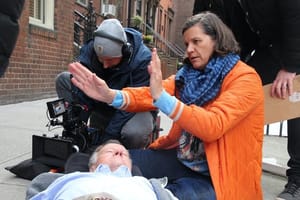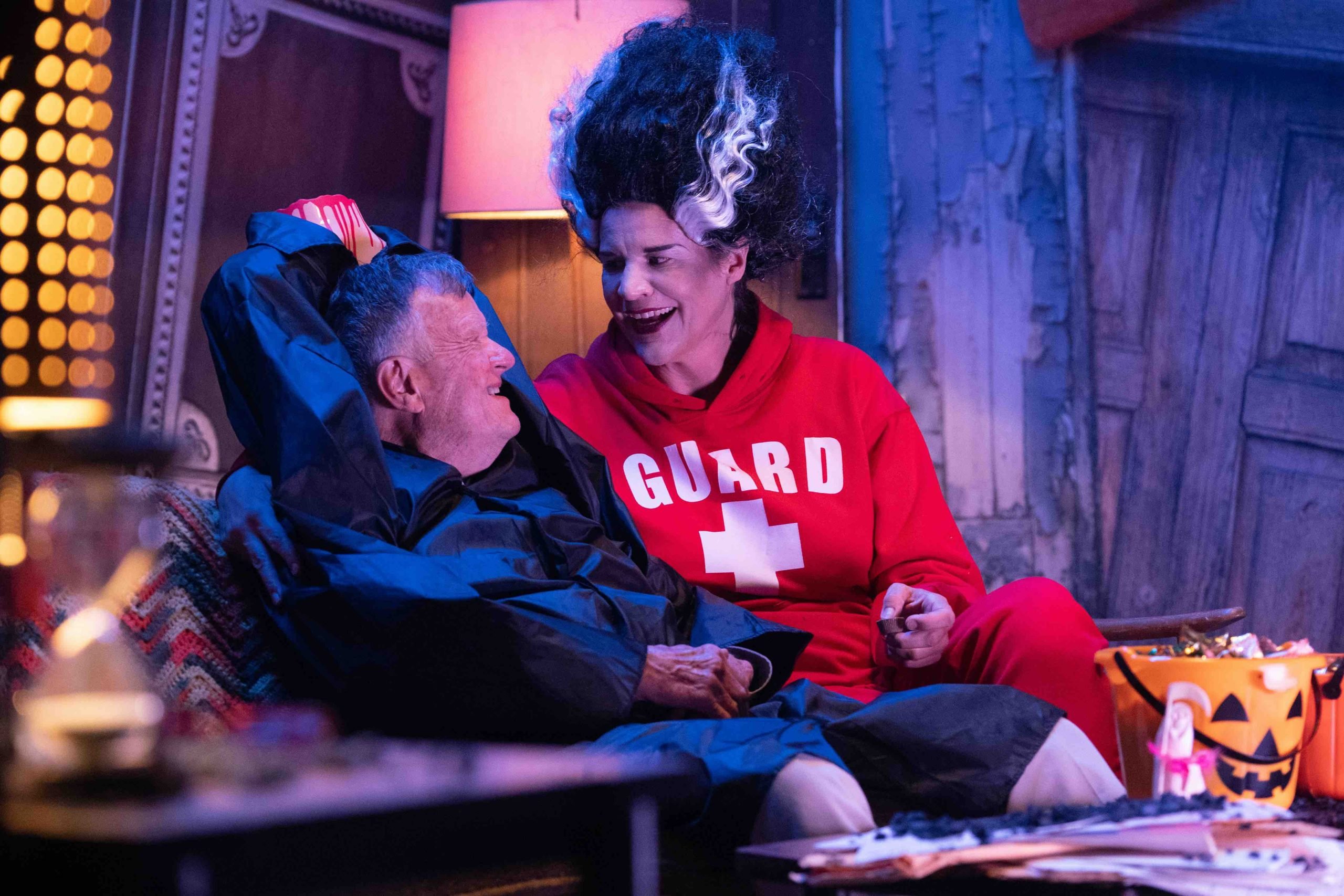
With the core production team forming, we started to conceive a way in which editing and sound design would happen much earlier than usual in the process, and just as the images had given me ideas while writing my grant application, the edit and sound design taught us what to film next. I discussed it all with many people, floating the trial balloons of saying out loud absurdist taboo words like, “I want to make a film with my dad using stunt people. I want to ‘kill’ him over and over until the day he really dies, for real.”
I watched my friends eyes widen and heard them try to hold back incredulous laughter. I heard many of them ask “Why?” with concern in their voice. I couldn’t answer that question yet, but in my heart I knew it was connected to how desperately, urgently I didn’t want my dad to die.
These conversations about our projects, this “call and response” with our collaborators—who should be people who challenge our blindspots, is a form of testing what’s worth making. This “development process” is actually about the deep relationships we cultivate over time with people who love and make cinema. I was taking my time to imagine the film with trusted friends and colleagues, contemplating the how of the process, still totally unsure of whether it would be possible to fund, because who would take the leap with me on this except trusted friends?
Then, for the first time in my 30-year career in documentary, I got a cold call from someone wondering what I wanted to make next as a director. It was Priya Swaminathan, at that time with Annapurna Pictures. We didn’t know each other, but she had seen Cameraperson. When I told her I was interested in working with stunt people and my dad as a way to explore the unexpected edge between the imagined and the real — the absurdist cliff between life and death — in a Jackass funny kind of way, she laughed out loud and said, “Did you know I worked on Jackass?!”
I was so excited by how I had personally hit it off with Priya, that I imagined for a moment I should fly right out to L.A. and pitch her Dick Johnson is Dead on my own. But years of “being crew” and seeing many directing and producing styles in action has taught me to value humility, to trust the people who know different things than you do about the filmmaking process, and to always remember how much you need your team. Especially at the moments when something thrilling is happening, and you suddenly experience the euphoria of thinking you’ve made the big time.

Dick Johnson is Dead star Dick Johnson (L) and director Kirsten Johnson share a moment
I learn over and over again that I can’t know how to move into new filmmaking territory alone. Bring your trusted allies with you — that’s where it’s at. They will have your back protect you from yourself and from others, seeing opportunities you can’t see for yourself. Katy and Marilyn’s acuity as producers meant they could see that a meeting with Priya meant we had leverage to ask for pitch meetings with other companies. That led us to meetings with independent financiers, sales agents, and streaming services, where we attempted to convince them that our iterative process would help find a path to making this improbable film.
In all of those meetings, I talked to everyone about our relationship to death and denial. I wanted the conversations to matter to them and me whether we ended up working together or not. I asked everyone we met with if they had ever thought about what form of death frightened them most, or if they had a way they wished to die. We all laughed a lot and everyone said they couldn’t quite imagine what the film would look like, and nearly all said they couldn’t take the risk on funding it without seeing it first.
For the first time in my career, this encouraged me. It was great news that none of these experienced people, who financed scores of films, could quite envision the film, but that they had all laughed and responded with deep emotion to the pitch. Priya brought her colleague, the legendary Chelsea Barnard, into the mix, saying they would be willing to back us in shooting a pivotal scene which we could then use as a proof of concept in order to open up funding for the film. Then, together with Marilyn, Katy, and Maureen Ryan (a truly innovative and ingenious Adventist church in Seattle, the church my father had attended all of his life? Could I really invite all of our friends and family to my father’s “funeral”? While my father was game, what about my only sibling, my brother Kirk? Suddenly, the word that had so preoccupied my thinking in making Cameraperson returned: “permission.” What makes permission and access possible? Trust. Risk.
Also read: Aaron Sorkin Is ‘Surprised There’s Never Been a Robert Moses Movie’
That is what people I trusted and respected did with me every step along this “development” phase—they took risks with me. How moved and surprised I was when Lisa Nishimura saw our funeral footage and said yes! She and Netflix were willing and excited to take the risk with us of not knowing what the film would be. I was then faced with a dilemma. Was I willing to take the risk? If I took Netflix’s offer, it father’s own life, the leap of faith for all of us felt immense. To my marvel, and with the insightful guidance of Kate Townsend and Jason Spingarn-Koff, Netflix has honored all of my choices as director and daughter. Dick Johnson is Dead now exists and will be released to meet an audience that understands more about grief and loss now than any of us did when we were making it.
As we all keep facing the uncertainty of the future in front of us, let’s keep reminding ourselves that the past is in front of us too. And those we trust and risk and fight and dream with are the ones with whom we build.
Dick Johnson is Dead, directed by Kirsten Johnson, is now streaming on Netflix.
Share:

